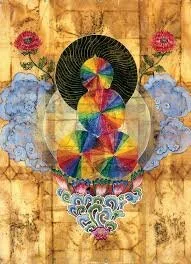Sending and Receiving
Dear All,
The time of the virus seems to invite us to fear. Fear arises.
Fear arises. Might as well accept it. And there it is again.
Fear arises, that is, automatically, and we experience it passively. It is up to us if we are actively to perform something that neither denies fear nor lets it have the last word.
To understand the spiritual and psychological acuity of the John quotation about fear, both "perfect" and "torment" need some explanation. Torment first. The Greek term translated as "torment," kolasis, means curtailment or pruning. It is a state like the turtle who has drawn in his head and limbs. That is a precise characterization of fear: retreat at every level, even if it sometimes involves outward flailing.
The word translated as "perfect," teleios, means reaching ever outward toward an outermost fulfillment. It doesn't mean complete, but reaching forth. Telescoping.
So fear is a state of retraction; perfect love is a reaching outward and outward, with an impulse to connect, heal, appreciate, honor. The antidote to fear is not self-protection, but radiance. In David Spangler's terms, not seeking comfort, but becoming comfort.
In the Tibetan Buddhist practice of tonglen, which is the main meditation behind the lojong slogans altogether and the specific focus of slogan #7, we make an intentional switch from retraction to expansion. We do an operation on ourselves and our world that switches us from self-protection to radiant generosity.
In tonglen, we imagine ills of various kinds and we breathe them in. We take them on directly, intentionally, for ourselves or others. We inhale fear, for instance, and intentionally allow it to feel bad. At some point, however, we turn and exhale the divine opposite of fear: as calm or love or courage. So we take in the ills of the world deliberately, not passively, and we send out a radiance of blessings.
Pema Chodren has a simple article on this: https://www.lionsroar.com/how-to-practice-tonglen/
And here she is on YouTube guiding a 4-minute version: https://www.youtube.com/watch?v=QwqlurCvXuM
Traditionally, one really allows oneself to feel the fear, the pain, etc. on the in-breath, or on many in-breaths, before transforming it on the out-breaths. It is a painful assumption of fear or another ill into one's own body and mind. Pema's teacher, Chogyam Trungpa, puts this stringent form forward in our text, Training the Mind(Shambhala, 1993). In Pema's easy-listening versions, the first stage is simply a wish to relieve the suffering of others.
I wish we could be together in physical proximity to practice tonglen. There is a magic in group meditation that is hard to find when we're far apart. We help each other by our physical presence, even with eyes closed, and this has something to do with why there needs to be a physical world at all.
Still, we can let our distances goad us into a questioning awareness. The countries on earth seem separate and so different. Yet a shared vulnerability unites us regardless of language and other barriers. What can we learn from the virus? "The whole point," as Trungpa puts it, speaking of tonglen, "is to remove territoriality altogether."
All blessings to all,
Michael





